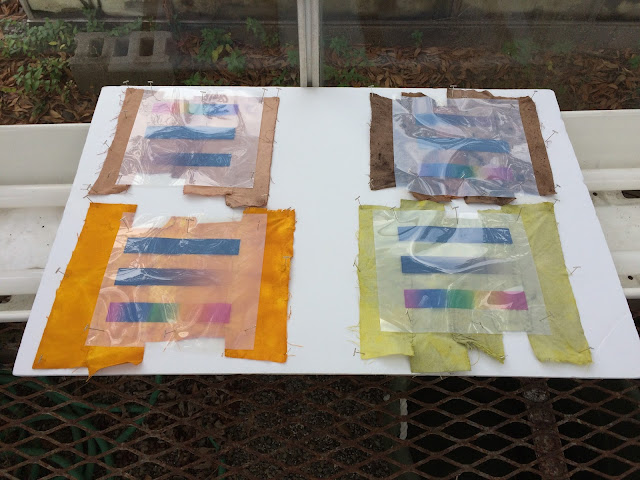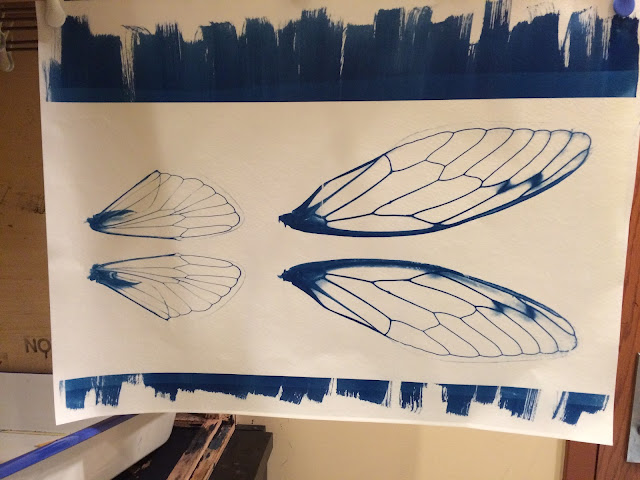Beginning of exposure test.
Final quilt top ready to expose. final size is 36x44.
Anthotype getting additional exposure at night.
Anticipating the anthotype will be complete in 2-3 more weeks.
final test results from spinach.
final results from turmeric.
final results from pokeberry.
All three are a months worth of exposure
These are new quilt squares for the thesis quilt. That are from family heirloom quilts.
Anthotype Exploration
This project is an
extension of my alternative process work. Anthotype
is an early photographic process, which uses natural dyes and extended sun
exposure to create photographic images. My present body of work includes other
mediums by combining anthotype onto textiles. Anthotype is historically
considered a “craft” form of photography, but with this series I hope to change
that perception by using multiple “craft” forms to create a work of art.
Within the work I’m exploring our human,
and specifically female, connection to landscape and nature. My personal connection to nature and place has
strong visual representation in the work through the dyes used and image
sources. With the entirety of this work I’m hoping to explore connections
between natural dyes and nature, quilting and female identity, and feminine
knowledge transfer through shared techniques and traditions. The female lineage
of quilting will form the roots of this body of work, and should be
illustrative of the knowledge transferred through women over time, both through
craft and as a tangible object. This work will also challenge the basic
photographic principles of light and time since anthotype is both created and
destroyed by light.
All of these processes are deeply seeded at the
core of who I am. Quilting has a rich history within my family lineage. The
history of natural dyes, photography, and quilting are vast and deep with
significant artistic, gender, and cultural importance. As I continue to explore
all of them it creates a new way of viewing each separately. The process of
creating this work is also extremely time consuming. The fabric is solar dyed
which takes at least a week and the Anthotype can take anywhere from 3 days, in
the summer to months in the winter. Through this process I am learning patience
in art rather than discipline, which is a new principle within art for me.
Other ideas I want to explore:
-Having my daughter was what gave me the courage to come back to school, and in a way I'm creating something lasting that chronicles my time here. It will be a tangible object of what she gave me.
-Fitting the family heirloom squares into the piece and what that means
























































